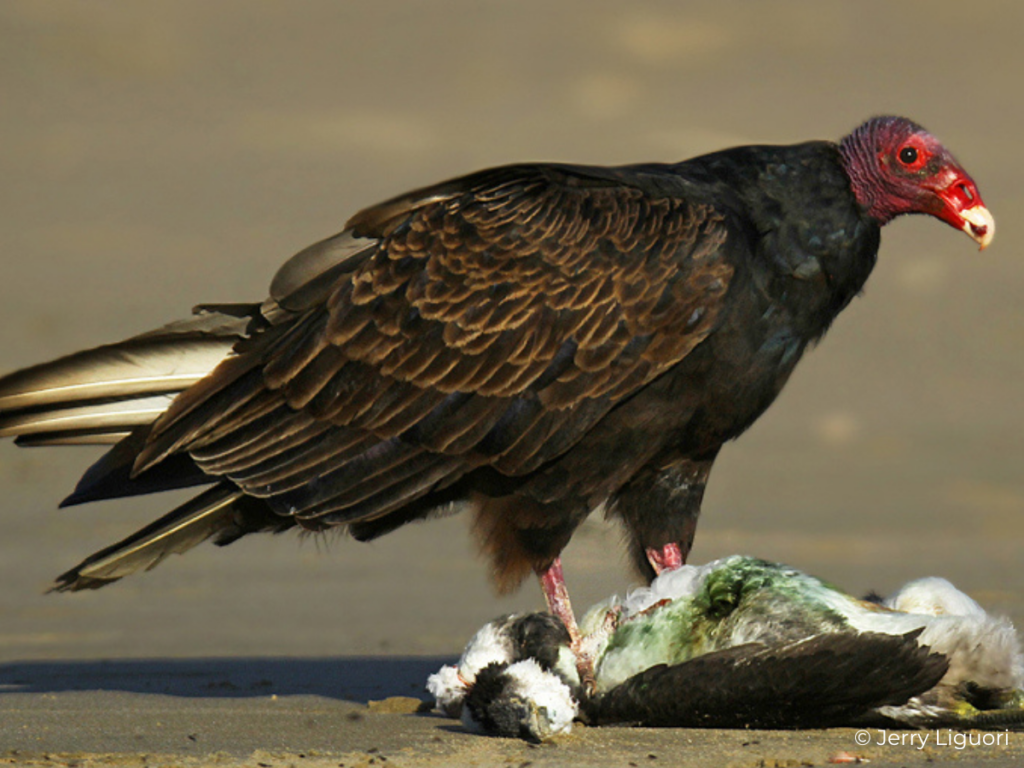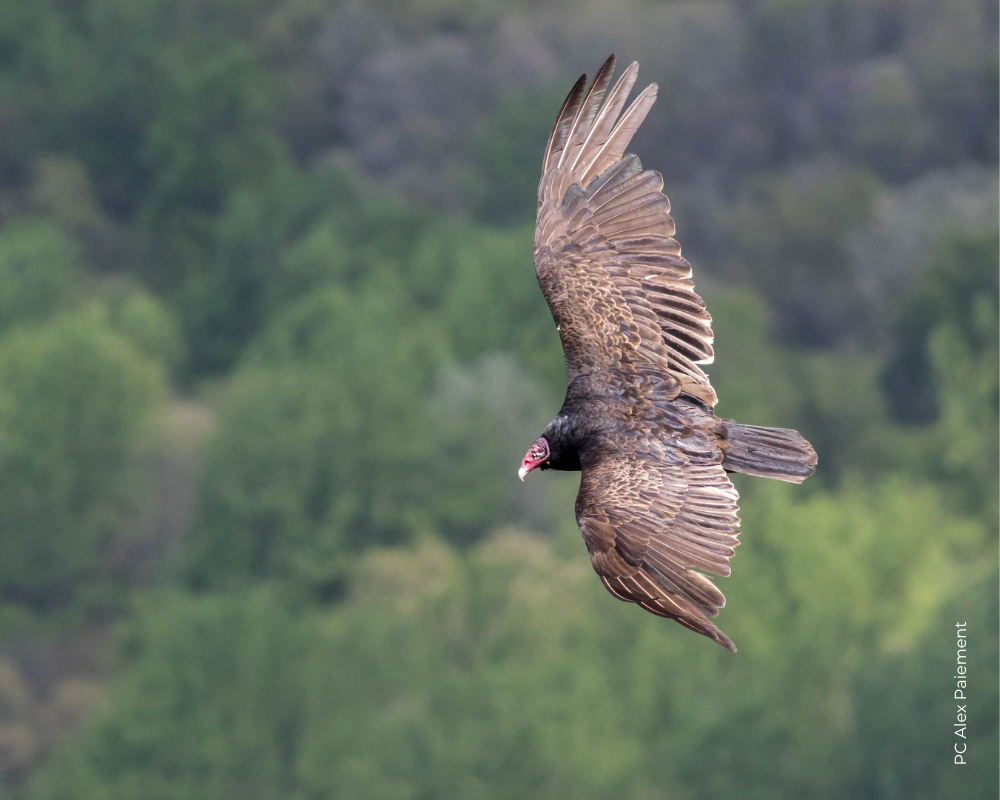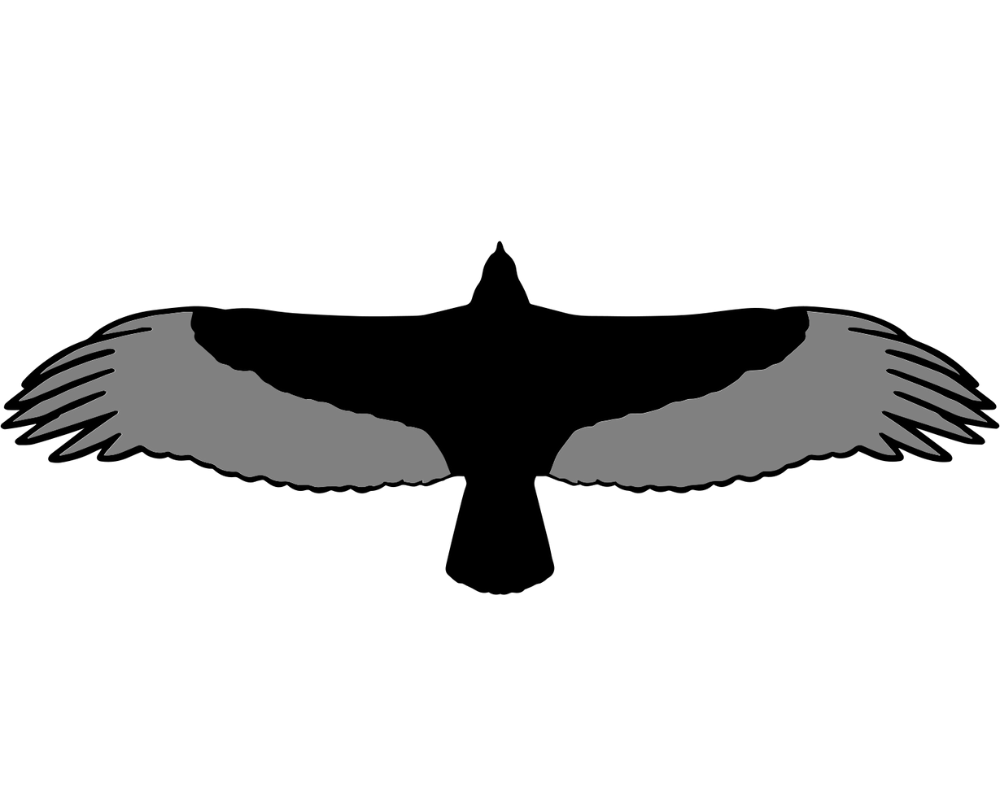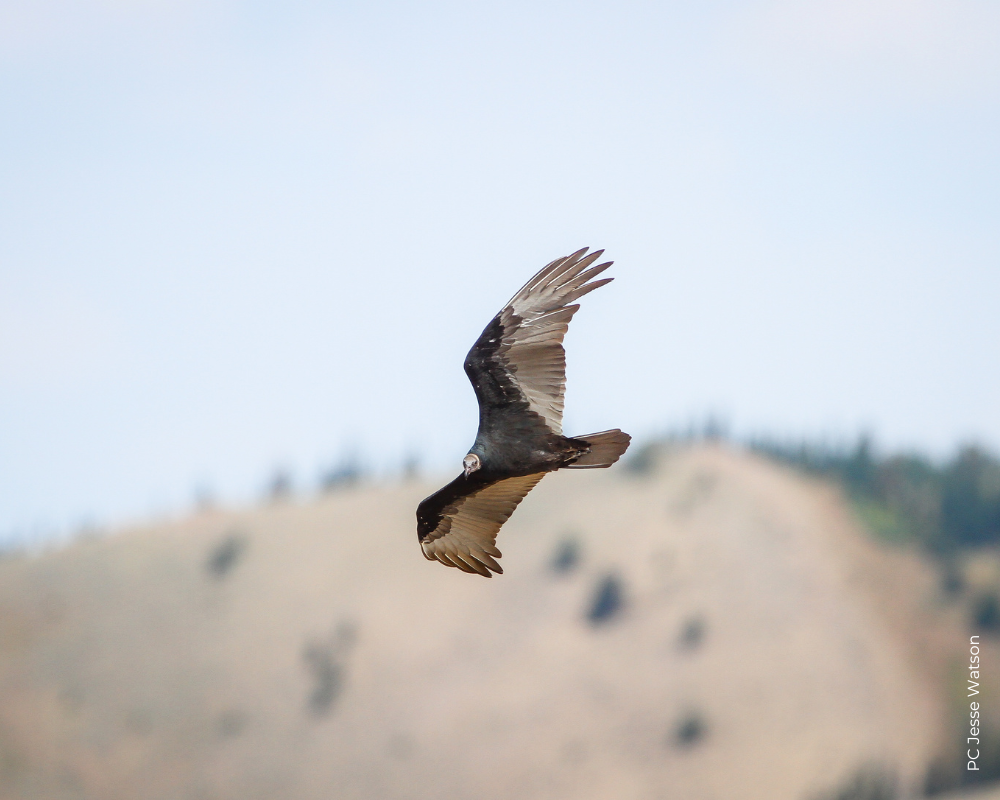Overview
Turkey Vultures are large birds, only slightly smaller than eagles, but behave differently and live very different lives than eagles. They are social and can often be seen in large groups on migration when foraging for food year-round and at communal roosting sites. They feed strictly on carrion (animal carcasses), soaring for hours in loose groups seeking out food by smell as well as by sound. When doing so, birders can easily recognize them, even from far away, based on their obvious manner of flight. They often perch in the open on dead snags, radio towers, and other man-made structures and hold their wings outstretched to “sunbathe”, which helps condition their flight feathers and is thought to supply them with vitamin D (as with all birds). Mostly non-vocal, Turkey Vultures occasionally hiss when aggressive or scared, and the call is very raspy, hollow, and eerie – perfect for a scary movie scene.
Turkey Vultures are common breeders from southern Canada throughout the United States (March-August) and are especially abundant throughout the Southeast. Populations are expanding north, and the increase in count data at northerly bird migration sites and the frequency of winter reports at the northern limits of their known range help support this observation. Most southern breeders are year-round residents, but northern populations are migratory. The Eastern population presumably winters mainly throughout the Southeast but as far north as the Northeastern states, but birds from the Great Plains and West winter as far south as northern South America.




